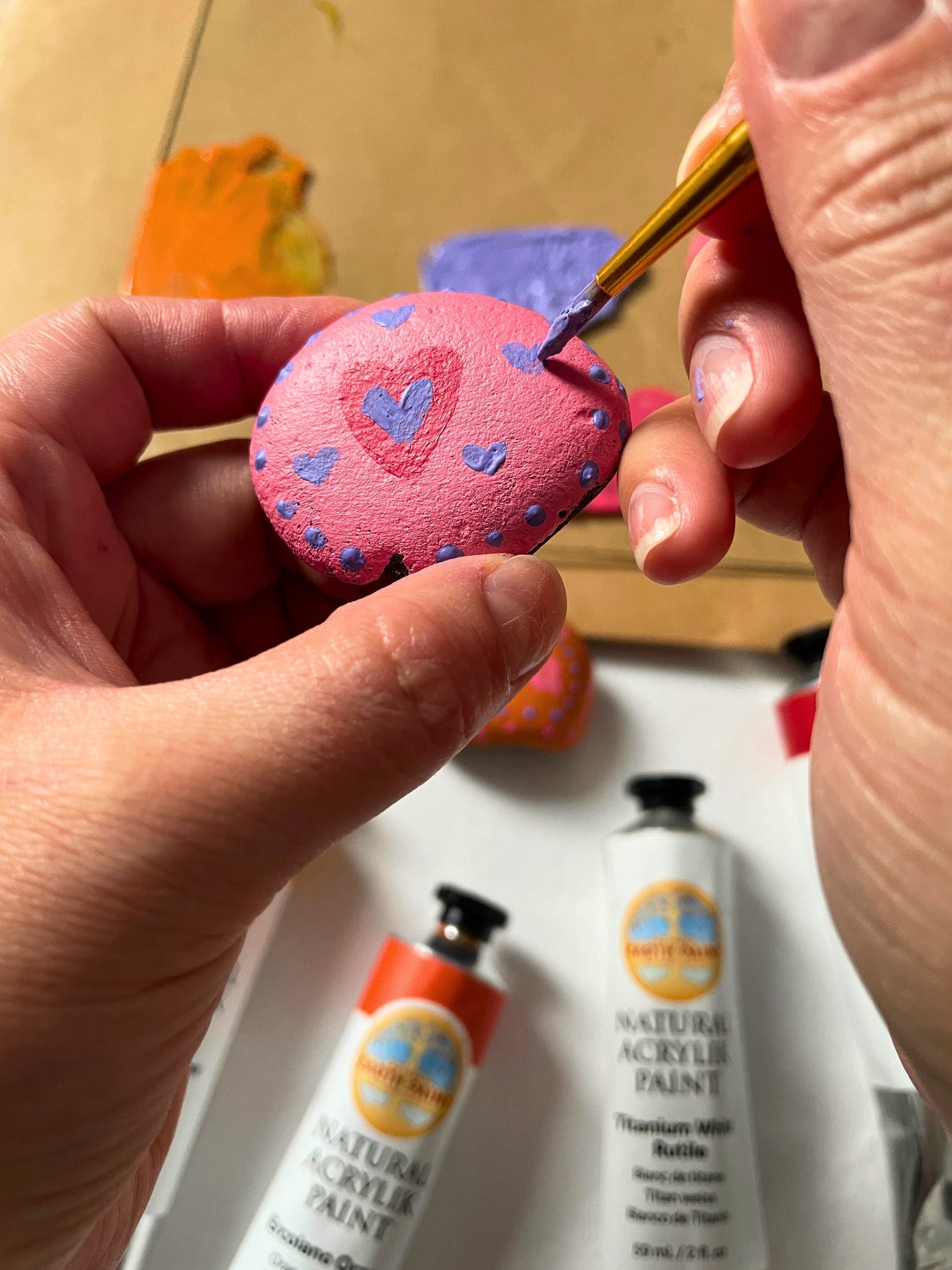
The Perfect "Galentine's" Party Craft with Natural Acrylik Paint!
Are you looking for a fun and easy craft to do with your friends for "Galentine's Day"? This craft is perfect for a night celebrating friendship and fun! Supplies: Natural...
Free Shipping on Orders of $150 | USA Customers Only
I was about to stop painting with acrylic paints because the odor and fumes were literally making me ill. Since using Natural Earth Acryliks, I can paint for as long as I want to; no need to open windows or wear a mask. I love the smooth, colorful paints, which mix nicely. I’m hooked!
I started to make my own paint because metallics are so expensive so I thought maybe I can make it myself. Now after making backgrounds I find another reason. Store bought professional paints add a lot of other stuff to the paint and it makes light colors like buff when it is painted as a wash to me practically none existent on the watercolor paper. I intend to make all my water color paints from here on out.
Love these Acrylic Paints already painted a few Projects. Having so much fun and Family Art time All Chemical Free. Mahalo Natural Earth Paint for the Gift of Healthy Art Supplies.
I bought these for my wife who is an artist. She loves them. She says she notices the difference between these and other acrylic paints.
The delivery was quick and we'd recommend them to anyone.
My sister has been painting for decades, primarily in acrylics and watercolors. She recently started exploring oil and found these while looking for organic linseed-based paint, because I like organic linseed oil for finishing wood. I figured the odds were 50/50 that she would like them. She loves them! She’s called me several times since Christmas to report on them and has ordered tubes and other supplies. I am confident I could not have made a better choice for her gift.
We have ordered this time and time again. It's the best paint for kids and adults. Thank you SO much for making incredible earth paints.